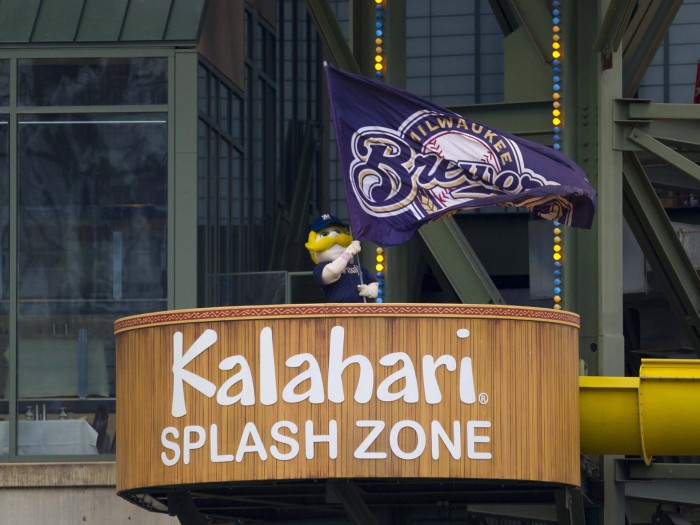This year’s Milwaukee Brewers — a team that floundered horrifically out of the gate, won all of 68 games, and at no point from May onward came within 10 games within .500. And yet, a total of 2,542,558 fans paid to watch the Brewers at Miller Park this year, seventh in the National League and 13th in the Major Leagues. Remarkably, the Brewers pulled in more fans than three playoff teams: Pittsburgh (2,498,596), Texas (2,491,875) and Houston (2,153,585).
Miller Park’s consistently high attendance has been a point of pride for the organization and its fans in recent years, as the Brewers have drawn in the top half of the National League in eight of the past nine seasons (only 2013, when the Brewers finished 9th of 15 in attendance, did they fail). The Brewers have averaged 30,000 fans per game every year since 2007, and that’s despite not only playing in the smallest media market in Major League Baseball, but also drawing fans primarily from only the north and west of Milwaukee, thanks to Chicago on the south and Lake Michigan on the east.
This consistent and reliable attendance has been critical to the Brewers’ ability to sign and retain players like Ryan Braun, Carlos Gomez, and Aramis Ramirez in recent years. It has helped the Brewers keep their payroll above $80 million even as they lag behind most other franchises in television rights fees and other critical revenue streams available to large-market franchises.
The 2016 season will mark the first year in a decade in which the Brewers are explicitly rebuilding and not expecting to compete, however unrealistic some of their expectations in the previous decade may have been. As such, it will be very curious to see what happens with these attendance numbers. I believe attendance is what economists refer to as a lagging indicator of team strength, particularly in the Milwaukee market where fans (particularly families) outside the city generally must plan trips to the stadium in advance. Contrast this to Toronto, which has a centrally located downtown stadium combined with a denser urban population. Due to this, the Blue Jays began a streak of sellouts immediately after their trades for Troy Tulowitzki and David Price this season, and as a result they drew the eight-most fans despite a tepid start to the season which saw them under .500 as late as July 28th (50-51).
Because attendance is this lagging indicator, I believe there’s reason to believe attendance may drop even further next season. Miller Park’s attendance drop of 254,826 fans (3,146 per game) was the third-largest in baseball, eclipsed only by the bottom-feeder clubs in Atlanta and Philadelphia. Another season like 2015 combined with the already low expectations for 2016 could cut into that attendance even further.
As such, it was great to see the Brewers thank their fans on September 27th, dubbed fan appreciation night. Brewers players rode around the Miller Park parking lot in golf carts, stopping occasionally to join bags games and pose for photos (including the dreaded selfies, gasp!) with fans. Even though the club had clinched its first 90-loss season since 2004, the fans were having a blast hamming it up with Brewers players.
While it is tempting in our competitive fan culture to demand fans attend games or lose their credibility as “real fans,” the onus is on the team to ensure the fan experience is still worth the money. The only surefire, consistent way to do this is with winning baseball. By throwing fans a bone every once in a while like they did last week, though, the Brewers can at least keep making Miller Park a fun and welcoming environment. Hopefully, the organization continues to recognize that as the club’s rebuild drags on next season.

1 comment on “Brewers Continue To Impress At The Turnstiles”